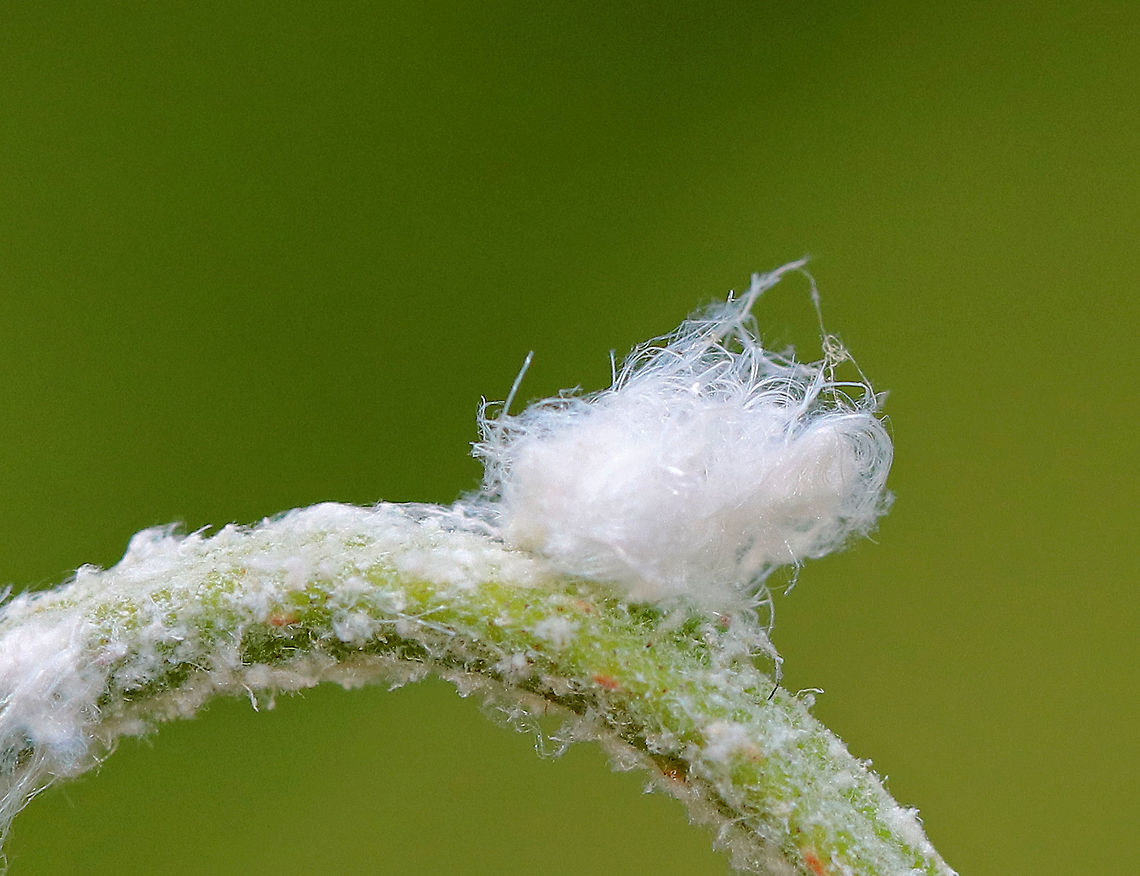 Promoted
Promoted
Woolly Aphid - Subfamily Eriosomatinae
These tiny aphids look like white fuzz balls! They were approximately 3-5mm in length and were completely covered in waxy, white filaments. The waxy filaments give this intriguing pest a fluffy appearance, as though they were covered in wool, hence their common name. The waxy filaments serve two purposes - they deter predators and reduce friction. Woolly aphids are definite pests. As they feed, they inject saliva into their host plant which helps them digest the sap. This predigested sap is then sucked up by the aphid. They will feed on leaves, buds, twigs, and bark and can cause curled leaves, yellowed foliage, and poor plant growth. In addition, they secrete a sticky waste product called honeydew. A coating of honeydew can often be found on and beneath infested trees. As a result, sooty mold fungus will sometimes grow on the honeydew.
Woolly aphids have a very complex life cycle! Almost all woolly aphids alternate feeding between two host plants and depend on those plants for their life cycle. The primary host plant is the plant that they lay eggs on to overwinter. Female aphids hatch from the eggs during the spring and immediately start producing live offspring without mating. These aphids are simply clones of the original aphids. After 1-2 generations on the primary host, the new aphids develop wings when they reach adulthood. The winged females will then fly to a secondary host plant where they begin feeding and producing additional generations. Most of their growing season is spent on their secondary host. Each female will produce hundreds of clonal offspring even though their average lifespan from birth to adulthood is only about one month. During late summer/early fall, a new generation of winged females is produced on the secondary hosts, which then fly back to the primary host. These winged females produce clones that are both male and female. These aphids then mate with each other. The eggs from this generation will overwinter and start the cycle again in the spring.
No species identified
The species on this photo is not identified yet. When signed in, you can identify species on photos that you uploaded. If you have earned the social image editing capability, you can also identify species on photos uploaded by others.

comments (2)
What!?!? I mean I heard you, but....what??? Top post, Christine, absolutely fascinating. Posted 7 years ago